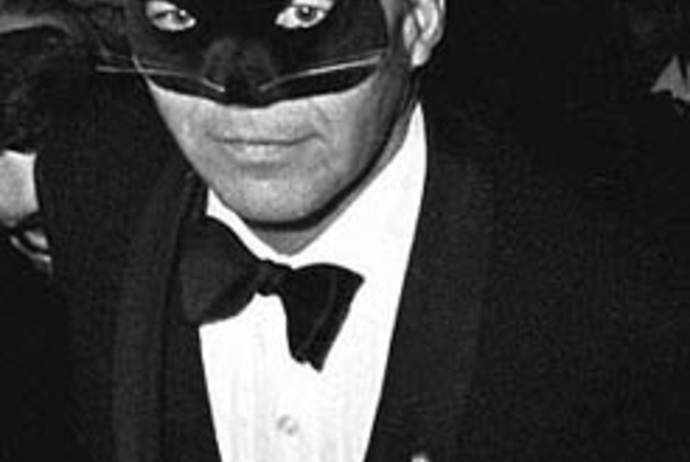There have been informal and in-depth looks at Italian-American folk performances from the Sicilian opera dei pupi and St. Joseph’s altars, to the full-blown spectacle of the religious street festa. We know the histories of how immigrants introduced these various practices to the United States and how their descendants developed them over time. The overwhelming majority of the theatrical and social performances that have been written about are rooted in the subaltern lower classes, the vernacular performances derived from southern Italian peasantry and expanded upon by the American proletariat and lower middle class. Unfortunately, little research has been conducted on the folk performances of the Italian-American elite, such as the gala, the banquet reception, and the award ceremony.
Any attempt to understand the aesthetics and social worlds of everyday Italian-American life must include a close examination of the elite’s notions of taste, history, politics, and group identity. Such a project would call for Gramscian lines of inquiry into hegemonic discourse and cultural production: How are positions of power established and institutionalized? How are collective histories created and reproduced? How is group identity constructed as normative, traditionalized, and disseminated? What are the aesthetic components and cultural codes by which such identities and relationships are enacted?
The work of social scientists like sociologist Erving Goffman and anthropologists Victor Tuner and Clifford Geertz have shown how certain ritualized behaviors and group activities constitute paradigmatic performances dramatizing deeply held beliefs and values. A performance studies approach to Italian-American elite ceremonies, banquets, and receptions could tell us much about the cultural politics of the group.
Historical studies on the folklore of the prominenti (literally “prominent ones”) include folklorist Elizabeth Mathias’s work on former contadini living in south Philadelphia who borrowed prestigious funerary practices of gli signori remembered from Italy in their attempts at social competition in America. Historian Philip Cannistraro examined the prominenti’s self-serving association with Fascism during the 1920s ad 1930s and their preferred performance modes of self-congratulatory award ceremonies, banquets, and receptions. Folklorist Joan Saverino’s research on Columbus Day and the “Italian Days” Festival in Reading, Pennsylvania during the same time period shows how the local prominenti crafted public festivals in their attempts to serve as culture brokers between working-class Italians and American elites and dictate how “Italian American” culture and identity would be represented.

A similar study of contemporary practices has not been undertaken. An ethnography of such events would reveal a series of core, seemingly obligatory, components that establish the genre, such as formality, prestige, and celebration. Hero worship, in which a historical or living person of success and fame is ceremonially “honored” and whose individual accomplishments are transferred by association to the group as a whole, is the seeming raison d’etre of such events. (Historian Robert F. Harney’s work on the “ethno-psychiatric uses of history” by Italian community leaders and intelligentsia in North America in their attempts to assuage “ethnic self-disesteem” in critical for understanding this aspect.) The bestowing of an “award,” a physical object often taking the form of a plaque, and its subsequent display in places of high visibility such as the work space are defining elements. The political nature of these events as witnessed by the invited local, national, and international politicians, the singing of national anthems, etc., is fundamental.
A synchronic look at a specific performance would show how these and others components are knitted together into a holistic event to convey meaning. A look at different ethnic events in a single institution such as a banquet hall would uncover similarities and differences between various groups. The very mundaneness of these events masks their importance in perpetuating the cultural-political face of group identity, summed up by Saverino’s subtitle: “Pageantry, Power, and Imagining the Italian American.”
Bibliography
Philip V. Cannistraro. “The Duce and the Prominenti: Fascism and the Crisis of Italian of Italian American Leadership.” Altreitalie 31 (July-December 2005), 76-86.
Robert F. Harney. “Caboto and Other Parentela: The Uses of the Italian Canadian Past.” From the Shores of Hardship: Italians in Canada, Nicholas De Maria Harney, Ed. (Welland, Ontario: Éditions Soleil, 1993), 4-27.
Elizabeth Mathias, “The Italian-American Funeral: Persistence through Change.” Western Folklore 33.1 (1974), 35-50.
Dorothy Noyes. "Form the Paese to Patria: An Italian American Pilgrimage to Rome in 1929.: Studies in Italian American Folklore. Luisa Del Giudice, Ed. (Logan: Utah State University Press, 1993), 127-152.
Joan Saverino. “Italians in Public Memory: Pageantry, Power, and Imagining the Italian American.” The Italian American Review 8.2 (Autumn/Winter 2001), 83-111.













































